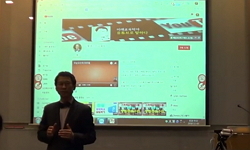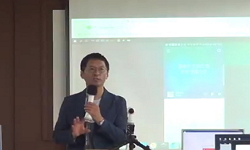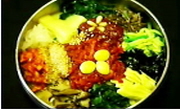This thesis is intended to examine the background of Gyeonggijeon's establishment and the process that the Chosun Dynasty's ritual protocols was consolidated while discussing the abolition of Gyeonggijeon. Taejojinjeon is the place for the portrait of...
http://chineseinput.net/에서 pinyin(병음)방식으로 중국어를 변환할 수 있습니다.
변환된 중국어를 복사하여 사용하시면 됩니다.
- 中文 을 입력하시려면 zhongwen을 입력하시고 space를누르시면됩니다.
- 北京 을 입력하시려면 beijing을 입력하시고 space를 누르시면 됩니다.
https://www.riss.kr/link?id=A76380831
-
저자
김철배 (전북대학교)
- 발행기관
- 학술지명
- 권호사항
-
발행연도
2009
-
작성언어
Korean
-
주제어
전주 ; 태조진전 ; 경기전 ; 이방간 ; 국가의례 ; 전직 ; Taejojinjeon ; Gyeonggijeon ; Jeonju ; ritual protocols ; Lee Sung-Gye ; Lee Bang-Gan ; Jeonjig
-
등재정보
KCI등재
-
자료형태
학술저널
-
수록면
77-104(28쪽)
-
KCI 피인용횟수
12
- 제공처
-
0
상세조회 -
0
다운로드
부가정보
다국어 초록 (Multilingual Abstract)
This thesis is intended to examine the background of Gyeonggijeon's establishment and the process that the Chosun Dynasty's ritual protocols was consolidated while discussing the abolition of Gyeonggijeon. Taejojinjeon is the place for the portrait of King Taejo Lee Sung-Gye, Chosun's founder. During the first period of Chosun' foundation, it was built on the five places in Youngheong, Kyungju, Pyeongyang, Jeonju, Gaesung. Especially, Taejojinjeon in Jeonju was called Gyeonggijeon. Gyeonggijeon in Jeonju was built by the request of local residents in Jeongju. Because of the Lee Bang-Gan's (Taejong's elder brother) exile in Jeonju by the suspicion related to treason at that time, Taejong was very concerned about the possibility that Lee Bang-Gan and local residents in Jeonju who have antigovernment's temper will conspire against him. On the other hand, the elders in Jeonju were burdened with the political suspicion by king and government. As a result of that, old and rich people in Jeonju asked for constructing Taejojinjeon to show their loyalty to Taejo Lee Sung-Gye and the Choseon Dynasty. That is to say, Taejojinjeon was built as a symbol to political compromise between the government and the local residents in Jeonju. After buliding Gyeonggijeon, the management of Taejojinjeon was discussed three times. This discussion is whether local's taking charge of performing ancestral rites to the founder of the Chosun Dynasty is right or wrong in considering the nation's ritual protocols. Owing to Gyeonggijeon‘s quility related to performing ancestral rites to the founder of the Chosun Dynasty, this discussion was deeply connected with maintaining the nation's ritual protocols symbolizing the authority of a royal family. In this process, Taejojinjeon in Jeonju obtained the name of "Gyeonggijeon". And it was managed actively. The government supervised to perform ancestral rites to the founder. For this, Jeonjig(殿直) was established. After that, Taejojinjeon in other places were abolished on account of the various reasons. Thanks to the direct relationship with a royal family in Chosun Dynasty, however, only Taejojinjeon in Jeonju (The hometown of Lee Sung-Gye's family) and Youngheong (Lee Sung-Gye’ hometown) were remained.
목차 (Table of Contents)
- I. 머리말
- II. 태조진전의 건립과 전주의 태조진전
- 1. 태조진전의 건립과 그 의미
- 2. 전주 태조진전의 건립 배경
- III. 국가의례 정비와 경기전
- I. 머리말
- II. 태조진전의 건립과 전주의 태조진전
- 1. 태조진전의 건립과 그 의미
- 2. 전주 태조진전의 건립 배경
- III. 국가의례 정비와 경기전
- 1. 국가의례 정비와 전주 태조진전 폐지논의
- 2. 경기전 성립과 전직(殿直)의 설치
- IV. 맺음말
- 참고문헌
- Abstract
참고문헌 (Reference)
1 국립민속박물관, "한국의 제사" 필기획 2003
2 이수미, "태조어진의 제작과 봉안 in : 왕의 초상- 경기전과 이성계" 국립전주박물관 2005
3 이희권, "조선후기 지방통치행정연구" 신아출판사 1999
4 김우철, "조선후기 지방군제사" 경인문화사 2001
5 지두환, "조선후기 종묘제도의 변천" 26 : 2004
6 金友哲, "조선후기 江原道 地方軍制의 변천" 조선시대사학회 24 (24): 185-208, 2003
7 김우철, "조선후기 束伍軍 給保·給復策의 推移" 4 : 1996
8 조인수, "조선초기 태조 어진의 제작과 태조진전의 운영-태조,태종을 중심으로-" (3) : 2004
9 지두환, "조선초기 유교적 국가의례에 대한 연구" 10 : 1998
10 정태헌, "조선초기 禁火施策에 관한 연구" 23 : 1989
1 국립민속박물관, "한국의 제사" 필기획 2003
2 이수미, "태조어진의 제작과 봉안 in : 왕의 초상- 경기전과 이성계" 국립전주박물관 2005
3 이희권, "조선후기 지방통치행정연구" 신아출판사 1999
4 김우철, "조선후기 지방군제사" 경인문화사 2001
5 지두환, "조선후기 종묘제도의 변천" 26 : 2004
6 金友哲, "조선후기 江原道 地方軍制의 변천" 조선시대사학회 24 (24): 185-208, 2003
7 김우철, "조선후기 束伍軍 給保·給復策의 推移" 4 : 1996
8 조인수, "조선초기 태조 어진의 제작과 태조진전의 운영-태조,태종을 중심으로-" (3) : 2004
9 지두환, "조선초기 유교적 국가의례에 대한 연구" 10 : 1998
10 정태헌, "조선초기 禁火施策에 관한 연구" 23 : 1989
11 지두환, "조선전기 종묘제도 연구" 8 : 2000
12 조선미, "조선왕조시대에 있어서의 眞殿의 발달-문헌상에 나타난 기록을 중심으로-" 145 : 1980
13 차문섭, "조선시대 군제연구" 단대출판부 1995
14 한형주, "조선시대 국가제사의 시대적 특성" 민족문화연구원 41 (41): 3-39, 2004
15 이성미, "조선시대 御眞關係 都監 儀軌 연구" 한국정신문화연구원 1997
16 김해영, "조선 초기 사전(祀典)에 관한 연구" 한국학중앙연구원 1993
17 이욱, "조선 전기 유교국가의 성립과 국가제사의 변화" 한국사연구회 (118) : 6-194, 2002
18 박원재, "제사와 제례문화" 한국국학진흥원 2005
19 양만정, "전주사고본 조선왕조실록의 보존에 관한 고찰" 전북향토문화연구회 2 : 1988
20 조준하, "우리나라의 제사문화와 종묘대제" 2001
21 전주국립박물관, "왕의 초상- 태조이성계와 경기전" 2005
22 "오례통고(흠정사고전서)"
23 이희권, "역사로 보는 전라도" 신아출판사 2001
24 허흥식, "불교와 융합된 왕실의 조상숭배" 일조각 1990
25 지두환, "국조오례의 편찬과정(Ⅰ)- 길례, 종묘, 사직제의(社稷祭儀)를 중심으로-" 9 : 1985
26 이동희, "고지도로 본 조선시대의 전주 in : 지도로 찾아가는 도시의 역사" 전주역사박물관 2004
27 홍승재, "경기전의 건축특성 in : 왕의 초상- 경기전과 이성계" 국립전주박물관 2005
28 조인수, "경기전 태조어진과 진전의 성격: 중국과의 비교적 관점을 중심으로 in : 왕의 초상- 경기전과 이성계" 국립전주박물관 2005
29 주웅영, "가묘의 설립배경과 그 기능" 7 : 1985
30 "輿地圖書"
31 "肇慶廟慶基殿大修理謄錄寫本"
32 한우근, "經國大典 註釋篇" 한국정신문화연구원 1986
33 이경자, "漢代의 孝敎政策에 관한 연구" 안암교육학회 10 (10): 63-84, 2004
34 완산, "湖南邑誌"
35 "朝鮮王朝實錄"
36 김해영, "朝鮮 初期 文廟 享祀制에 대하여" 15 : 2000
37 권오돈, "新譯 禮記" 홍신문화사 1982
38 "慶基殿儀"
39 김정문, "慶基殿 土地利用變遷過程에 관한 연구" 한국전통조경학회 20 (20): 14-25, 2002
40 "國朝五禮儀"
41 魏昌祖, "北道陵殿誌" 1748
42 김용천, "前漢時代 郡國廟 置廢 論議" 37 : 2002
동일학술지(권/호) 다른 논문
-
- 전북사학회
- 김병남
- 2009
- KCI등재
-
- 전북사학회
- 유호석
- 2009
- KCI등재
-
한말 일제초 전통 堤堰契의 근대적 水利組合으로의 전환 : 萬頃江 하류 沃溝西部氷利紐合의 사례분석
- 전북사학회
- 정승진
- 2009
- KCI등재
-
- 전북사학회
- 김재영
- 2009
- KCI등재
분석정보
인용정보 인용지수 설명보기
학술지 이력
| 연월일 | 이력구분 | 이력상세 | 등재구분 |
|---|---|---|---|
| 2026 | 평가예정 | 재인증평가 신청대상 (재인증) | |
| 2020-01-01 | 평가 | 등재학술지 유지 (재인증) |  |
| 2017-01-01 | 평가 | 등재학술지 유지 (계속평가) |  |
| 2013-01-01 | 평가 | 등재학술지 유지 (등재유지) |  |
| 2010-01-01 | 평가 | 등재학술지 선정 (등재후보2차) |  |
| 2009-01-01 | 평가 | 등재후보 1차 PASS (등재후보1차) |  |
| 2007-01-01 | 평가 | 등재후보학술지 선정 (신규평가) |  |
학술지 인용정보
| 기준연도 | WOS-KCI 통합IF(2년) | KCIF(2년) | KCIF(3년) |
|---|---|---|---|
| 2016 | 0.4 | 0.4 | 0.49 |
| KCIF(4년) | KCIF(5년) | 중심성지수(3년) | 즉시성지수 |
| 0.45 | 0.43 | 1.181 | 0.14 |




 eArticle
eArticle






